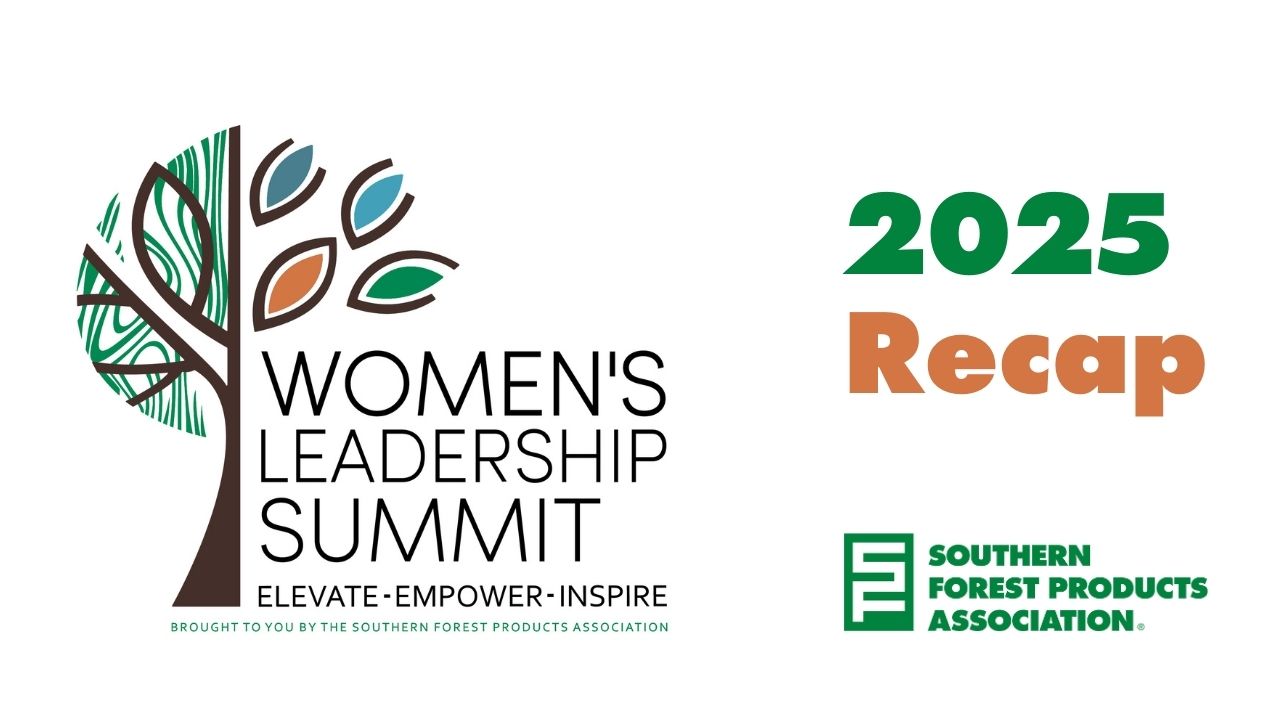Leadership in the forest products industry has long had a familiar look — one that leaned heavily male, traditional, and unchanging. But at the inaugural Southern Forest Products Association Women’s Leadership Summit, hosted during the 38th Forest Products Machinery & Equipment EXPO in Nashville, the conversation was different.
Over lunch and open dialogue, the industry turned its attention to something urgent and inspiring: the changing face of leadership.
That was the focus of Donna Whitaker, retired vice president of sales and marketing at Interfor and former SFPA board chairwoman; Dr. Heidi Adams, associate professor and Frank Merritt Endowed Professor of Forestry at Louisiana Tech University; Heidi Danbrook, sales manager with Gilbert; and Kim Drew APR, founder and president of Drew Public Relations Inc.
But this wasn’t just a panel discussion. It was a candid, energizing conversation about what it takes to lead today — and how mentorship, resilience, balance, and representation are reshaping the future.
Taking Risks That Redefine Careers
A major theme that surfaced was risk-taking. Growth, the panelists reminded the room, doesn’t come without risk. For some, it meant leaving behind steady jobs to start something new.
For others, it meant traveling alone to unfamiliar markets, sometimes in challenging environments, to prove themselves. Still others took the leap of uprooting their lives to pursue advanced education far from home.
The consensus? While risks can feel terrifying in the moment, they often become the career-defining decisions panelists look back on with pride. “Take the leap of faith — it’s worth it,” one panelist summed up.
Mentorship That Matters
The SFPA Women’s Leadership Summit reinforced mentorship is more than a buzzword — it’s a cornerstone of leadership growth. The most successful careers weren’t built in isolation; they were shaped by people willing to open doors, offer advice, and challenge assumptions.
But mentorship isn’t just about older leaders guiding younger ones. It can come from anywhere: a colleague, a peer, even the next generation. In fact, many leaders acknowledged learning from their own children, particularly about technology and communication in a changing world.
The call to action was clear: be intentional about mentorship. Lift as you climb. And remember — it’s not just about giving guidance but about being open enough to receive it.
Balancing Strength and Vulnerability
One of the most powerful messages of the Summit was that leadership isn’t about knowing everything — it’s about knowing when to ask for help. Vulnerability, far from being a weakness, can actually build stronger trust and relationships.
Panelists discussed moments when admitting “I don’t know” and committing to find the answer made them better leaders. Others talked about seeking mental health support to manage stress and remain effective. Strong leadership, it turns out, comes from a blend of confidence and humility.
This openness resonated across the room. Leaders who embrace both strength and vulnerability aren’t just more relatable — they’re also more effective.
Work-Life Balance as a Leadership Strength
The ongoing challenge of balancing professional drive with personal life took center stage. For many women in the industry, the early years meant long hours and sacrifice. But today, a shift is happening.
Younger generations are modeling healthier boundaries, showing that it’s possible to excel at work while prioritizing life outside the office. Rather than being seen as a lack of ambition, this approach is reframing balance as a leadership strength — one that allows people to sustain impact over the long haul.
This was a reminder the future of leadership will require not just hard work, but also self-care, mental health awareness, and respect for personal commitments.
Redefining Leadership
The Summit also challenged long-held assumptions about what leadership looks like.
Leadership, the panelists discussed, isn’t about titles, corner offices, or having all the answers. It’s about showing up, listening, and creating space for others to thrive.
Compassion, collaboration, and respect aren’t soft skills — they’re leadership skills. And as women continue to rise in the forest products industry, they’re helping redefine success not just for themselves, but for the entire workforce.
As one panelist put it, “Leadership isn’t about demanding respect; it’s about earning it through the way you show up and lift others up.”
Representation and Visibility
Perhaps the most urgent takeaway was the importance of visibility. Women in forestry and sawmill leadership are no longer asking for a seat at the table — they’re already here. The task now is to elevate their stories, showcase their contributions, and inspire others to follow.
Representation matters. When young women see others succeeding in leadership roles, they can envision themselves there too.
Events like the SFPA Women’s Leadership Summit aren’t just networking opportunities — they’re signals that the industry is evolving, and that women have an essential role in shaping its future.
The Takeaway
The SFPA Women’s Leadership Summit marked an important step forward for SFPA and the broader forest products industry. It proved that leadership today is about more than experience — it’s about courage, openness, balance, and inclusion.
As the industry continues to evolve, one thing is clear: the future of leadership will look different from the past. And if the conversations at the Summit are any indication, that future is bright, collaborative, and filled with opportunity.
